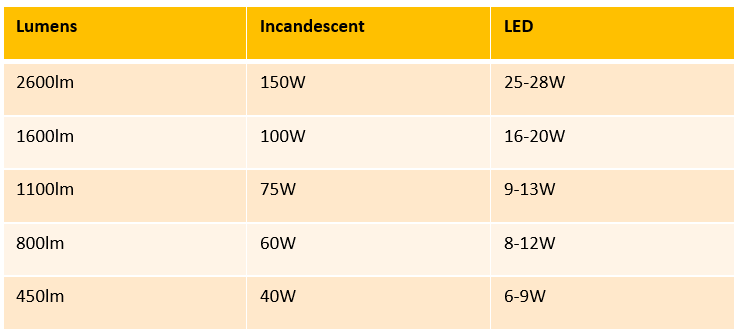LED’s have become the more popular lighting option used in homes and commercial settings. So how does LED lights make a difference in your home and business?
Longer Life Span / Cost Effective

LED lights have a longer life span than the traditional incandescent bulbs. The average lifespan of an LED globe is 50,000 hours compared to the traditional bulb where it can last up to only a few thousand hours. A longer life span means lower carbon emissions, making it the more environmentally friendly option. The fewer lights replaced by an LED, the less bulbs and packaging will end up in the landfill.
Price
Typically the upfront cost of LED bulb is pricier than the traditional bulb, but the switch will help reduce your energy consumption. This means you can expect to see long-term cost savings on your electricity bill. The switch also means reduced maintenance from replacing bulbs and therefore more cost effective.
*If you are an NSW resident, the NSW Government Energy Savings Scheme is currently available to incentivise eligible households to replace old lights with new LED lights. Click here to find out more information.
Versatility
LED lights are suitable for all lighting requirements whether it be the interior or exterior of your home or for commercial buildings. You can achieve stunning interior visuals with LED chandeliers or enhance your outdoor living with LED deck lights. For commercial buildings, to be compliant with the Australian Standards Emergency Lighting, it is required to install emergency lighting. With inspections being held every 6 months, LED emergency light is recommended given its longer life expectancy.
A popular trend on the rise is the use of LED strips to enhance aesthetics in your home. They can be used behind computer tables to create backlighting and a glowing effect, behind bed frames or under the bed as a night light for comfort in a kid’s room or as a luxury decorative feature such as bar areas and stairs.
Brightness
Lumen is the measurement of brightness. Less LED lights are needed to achieve the same level of brightness given off by the fluorescents and incandescent lights.
The below chart can assist you in choosing the right LED lumen output.

Colour
LEDs come in a range of light colour temperature including red, green, blue, yellow, amber, and white. Kelvin (K) is the measurement for colour temperature.
Choosing the correct colour depends on your desired ambience. For an example, for studying purposes and offices, it is recommended to choose anywhere between 3200 - 4000K “cool white” as this would imitate natural fresh daylight. As for bedroom, the common choice is a warmer white (2700-3000K) which gives a calming and relaxing ambience. For warm and intimate setting whether it’s at home or fine dining restaurants, 2200K is the preference.





